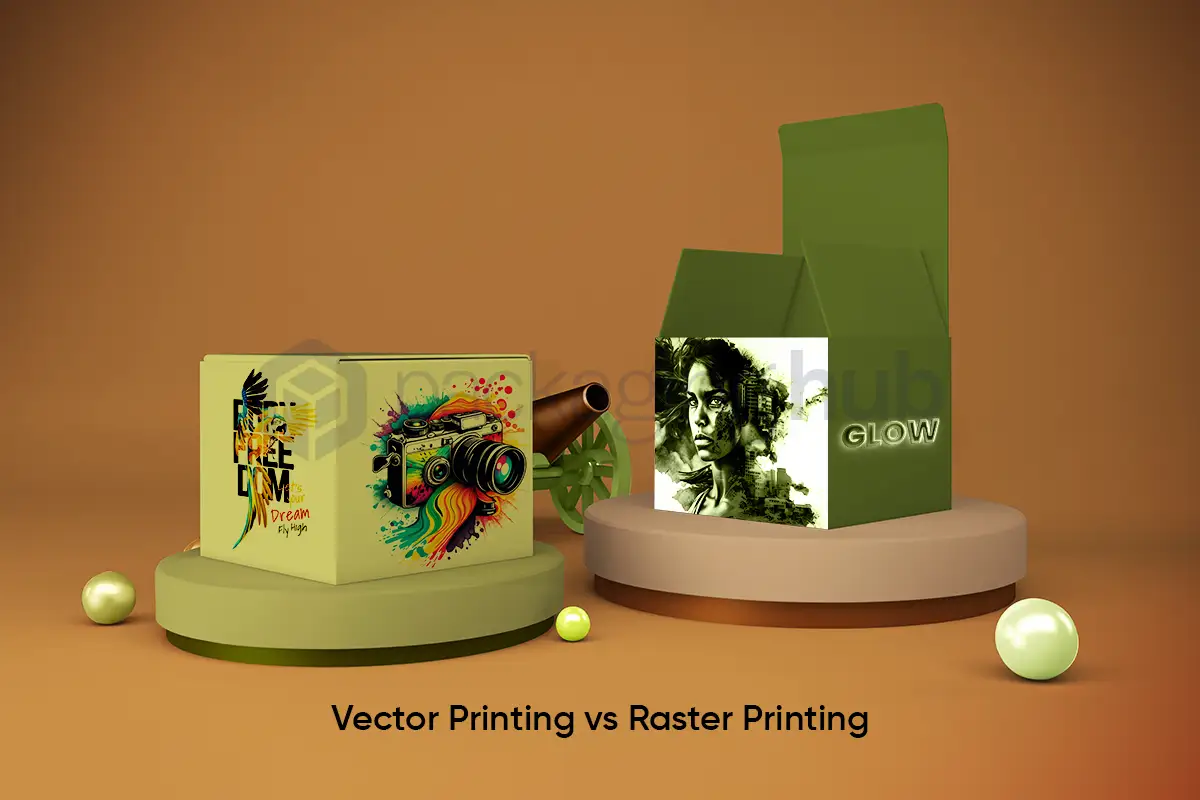Home » Blog » Raster Vs Vector Files – Best One For Printing

Last Updated on February 25, 2025 by
So, are you into printing and want to learn the technical stuff you could use for better printing? This blog will give you all the information you need to ensure your printing works for your customers. For example, one part of your job must work with raster and vector files. This blog will give you all you need to know about these files, their pros and cons, the difference between them, and which one to use for printing.
Also, you will find out which is better, working with vector or raster printing files. So, let’s go!
Table of Contents
ToggleEvery technical person in the printing world knows some things are difficult to understand. Image files are among the things that you need to be sure to know about. So, you can use your raster files while editing your images. They also work for photos and graphics.
On the other hand, vector files are prepared and used for digital illustrations and logos. At the same time, you use them for complex graphics. The reason behind this is their resolution stays the same during resizing. This is why you can use them for printing better.
When it comes to the rasters, they are bigger and would carry a huge number of pixels. On the other hand, vectors have smaller sizes, and you can use them for your jobs. Furthermore, when it comes to raster files, they are compatible and would open in multiple apps. This means they are easy to edit as well.
You can convert vectors into raster and not open them in every software you use. You can see its extension when you want to learn about the file type.
Vectors do not contain any pixels; they have sharp lines, and you can use them on multiple devices. And if you have a smaller number of pixels on a screen or dots on the printer, it does not affect this type of file. Vector does not contain the flare that images close-to-the-life offer.
Also, you can use raster type for better editing. But, at the same time, saving them in the soft copy would take more space.
Regarding this type of file, they have small dots of colors, and the number of pixels on these tells what kind of image quality you have. This quality of these files is called the resolution of your image, and the higher the pixels, the better your resolution, and vice versa.
At the same time, increasing the size of such a file can cause a reduction in its quality, but a file with more pixels will not pixelate or lose quality with such a process. Every pixel inside this image is just color, and these small patches convert these into images.
They can have multiple colors, and here are the extensions they have:
Another thing to remember is to have the correct number of pixels per inch to make images more qualitative. Of course, they become blurry when you increase their size, but you can scale them down without losing quality.
This file type comes from formulas that tell what the image is about. You can use them for Adobe Illustrator and CorelDraw, and even InkScape. But on the other hand, they can not carry things like shading and gradients. They can also come in the form of line art for your vector packaging work.
You can use them for logos, artwork, embroidery, and illustrations. Also, you can use them for printing jobs like stickers.
Now, being sure where to use which one is the real game. So, where to use a raster or a vector makes a huge difference? You can try the following:
Using a specific type of image can significantly impact what you get out of a job. So, when using raster type for digital jobs, you may prefer something else for your print jobs. But if you use high-resolution choices, you can try them for your print. At the same time, you can have great results when you design this type in CMYK in the form of color matching.
You can use vector type if you want smaller files for your printing. Another benefit of this type for your print jobs is you do not have to worry about making multiple. So, you can use the same file for logos and business cards or other print jobs you want.
On the other hand, you may not use vector type when you want your printed product’s colors to be super impressive. So, the best thing to do is to use a high-quality raster file for a print job. Here are some things to keep in mind when planning to use either of the file types:
One more thing to remember is if you need scalable print files, always use a vector type. Moreover, if you want solid colors, this type will work.
Packaging Hub is your one-stop shop for making incredible printing jobs come true. So, order now and get a perfect blend of colors with design and every other aspect kept in mind. Your print jobs never get better than what we offer, so get an ideal solution to your problems now!

Order your stylish and durable custom boxes and packaging from a team of industry experts.